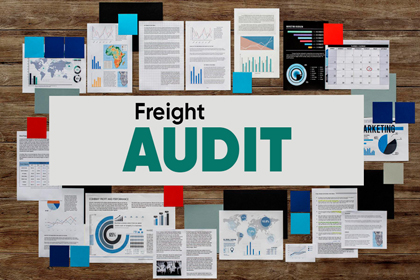Freight rates are a crucial aspect of logistics and supply chain management, determining the cost of moving goods from one location to another. They can fluctuate due to various factors, and understanding these elements is vital for businesses aiming to manage transportation costs effectively. In this blog, we’ll explore what freight rates are, the key factors that influence them, current trends in the industry, and tips for optimizing freight costs.

What Are Freight Rates?
Freight rates refer to the price charged by a carrier for transporting goods. These rates can vary depending on the mode of transport (truck, ship, rail, or air), the distance to be covered, and other factors such as weight, volume, and special handling requirements. Freight rates are a critical component in determining the overall cost of shipping goods, making them a significant concern for shippers and logistics professionals.
Key Factors Influencing Freight Rates
Several factors impact freight rates, some of which are within a company’s control, while others are driven by broader economic and market conditions.
1. Fuel Prices
Fuel is one of the most volatile factors affecting freight rates. As fuel prices rise, carriers typically pass on the cost to shippers in the form of fuel surcharges. Conversely, when fuel prices drop, freight rates may decrease as well. Monitoring fuel trends can help businesses anticipate changes in transportation costs.
2. Capacity and Demand
The balance between the available transportation capacity (trucks, ships, planes) and demand for shipping services plays a major role in freight rates. During peak shipping seasons, such as holiday periods, demand for transportation spikes, leading to higher rates. Conversely, during low-demand periods, rates can drop as carriers compete for limited business.
3. Mode of Transportation
Different transportation modes have varying costs associated with them. Air freight is typically the most expensive, but it’s the fastest, making it ideal for time-sensitive shipments. Ocean freight is more cost-effective for large volumes of goods but has longer transit times. Trucking and rail fall somewhere in between, with trucking offering more flexibility but often higher costs than rail over long distances.
4. Distance and Route
The distance between the origin and destination of a shipment is another key determinant of freight rates. Longer distances generally mean higher costs. Additionally, routes that pass through congested or high-risk areas may carry a premium due to increased travel time, fuel consumption, and security concerns.
5. Type of Goods
The nature of the goods being shipped also affects freight rates. Fragile, hazardous, or perishable goods may require special handling, insurance, and permits, all of which can add to the cost. On the other hand, standard, non-hazardous items may incur lower transportation fees.
6. Regulations and Tariffs
Government regulations and international trade policies, such as tariffs or customs duties, can have a direct impact on freight rates, especially for cross-border shipments. Staying informed about regulatory changes in the markets you operate in is crucial for managing costs effectively.
Trends in Freight Rates
In recent years, freight rates have been influenced by a variety of global trends, many of which have been driven by disruptions in the supply chain.
1. Post-Pandemic Recovery
The COVID-19 pandemic caused widespread disruptions in global supply chains, resulting in significant fluctuations in freight rates. As the world economy recovers, there has been a surge in demand for transportation, driving rates upward, especially in ocean and air freight.
2. E-Commerce Boom
The rise of e-commerce has dramatically increased the demand for logistics services, with consumers expecting faster and more reliable deliveries. This trend has put pressure on freight networks, leading to capacity constraints and, consequently, higher rates, particularly in last-mile delivery services.
3. Sustainability in Logistics
Many companies are now focusing on sustainability, aiming to reduce their carbon footprint by opting for greener transportation options. However, sustainable logistics solutions, such as electric trucks or carbon-neutral shipping, can come at a premium, potentially increasing freight costs.
4. Technological Advancements
Technology is transforming the freight industry, with innovations like digital freight marketplaces and Transportation Management Systems (TMS) providing shippers with more transparency and control over rates. These advancements can lead to better rate negotiations and more efficient route planning.
Tips for Optimizing Freight Rates
Managing freight costs effectively requires a strategic approach. Here are some tips to help businesses optimize their shipping expenses:
1. Leverage Volume Discounts
If your business ships large volumes of goods regularly, you may be eligible for volume discounts from carriers. Building long-term relationships with key logistics providers can also help negotiate better rates.
2. Consolidate Shipments
Consolidating smaller shipments into larger loads can reduce transportation costs, particularly in less-than-truckload (LTL) shipping. Working with a freight forwarder or a 3PL (Third-Party Logistics) provider can help streamline this process.
3. Use Technology for Route Optimization
Invest in a good TMS (Transportation Management System) Like NaaviQ to analyze shipping routes and identify cost-saving opportunities. Optimizing routes for fuel efficiency and shorter delivery times can significantly lower freight costs.
4. Diversify Carrier Relationships
Relying on a single carrier can limit your negotiation power and expose you to potential rate hikes. Diversifying your carrier base allows you to compare quotes and choose the most cost-effective option for each shipment.
5. Monitor Market Conditions
Keeping an eye on market trends and rate fluctuations can help you adjust your shipping strategy accordingly. During periods of high demand, consider using alternative shipping modes or delaying non-urgent shipments to avoid peak pricing.
Conclusion
Freight rates are influenced by a complex array of factors, from fuel prices and capacity constraints to global trade dynamics and technological advancements. For businesses, understanding these elements and taking proactive steps to optimize freight costs can lead to significant savings. By leveraging technology, fostering strong carrier relationships, and staying informed about market trends, companies can navigate the ever-changing freight landscape more effectively.
Whether you’re shipping goods domestically or internationally, a well-planned freight strategy is key to maintaining a cost-effective and efficient supply chain.
Optimize Your Freight with NaaviQ TMS
To streamline your logistics and gain better control over your freight costs, consider using NaaviQ TMS — a cutting-edge Transportation Management System that simplifies freight management, optimizes routes, and helps you monitor real-time data for cost-efficient decision-making. Let NaaviQ TMS be your go-to solution for managing fluctuating freight rates and ensuring smooth supply chain operations.
Discover how NaaviQ TMS can revolutionize your logistics today!




